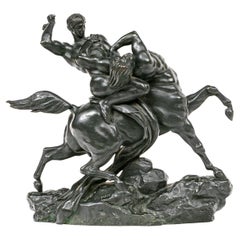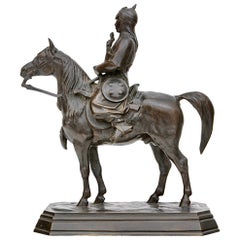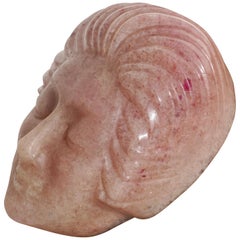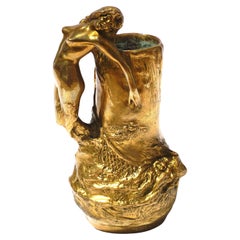Want more images or videos?
Request additional images or videos from the seller
1 of 11
Louis Ernest Barrias Bronze of a Woman Playing the Cello
Price:$1,800
$3,400List Price
About the Item
- Creator:Louis Ernest Barrias (Artist)
- Dimensions:Height: 13 in (33.02 cm)Diameter: 4 in (10.16 cm)
- Style:Beaux Arts (Of the Period)
- Materials and Techniques:Bronze,Cast
- Place of Origin:
- Period:
- Date of Manufacture:1870
- Condition:Minor losses. Missing the bow.
- Seller Location:Dallas, TX
- Reference Number:1stDibs: LU1774223028532
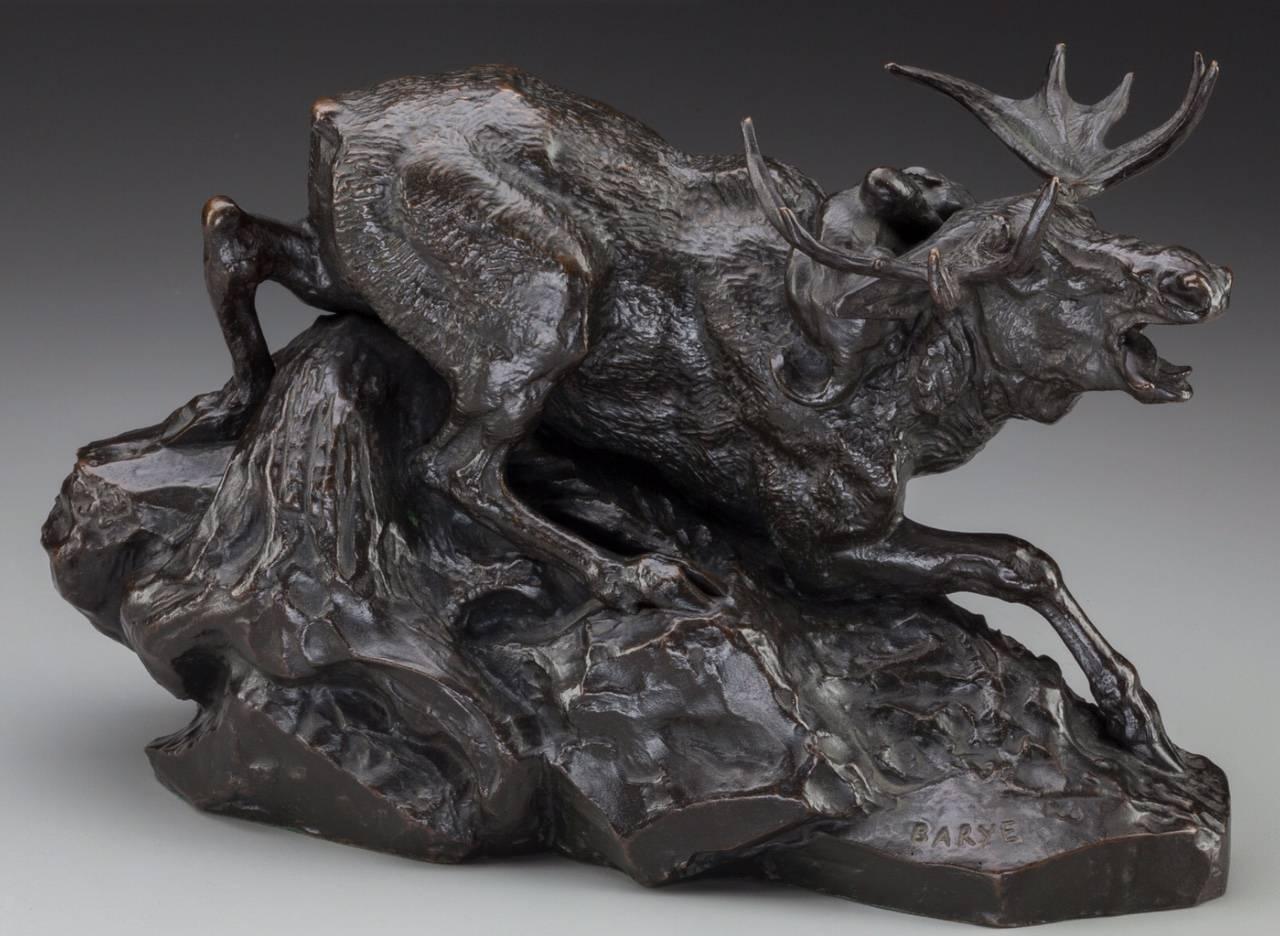
About the Seller
4.9
Gold Seller
Premium sellers maintaining a 4.3+ rating and 24-hour response times
Established in 2000
1stDibs seller since 2015
448 sales on 1stDibs
Typical response time: 2 hours
Authenticity Guarantee
In the unlikely event there’s an issue with an item’s authenticity, contact us within 1 year for a full refund. DetailsMoney-Back Guarantee
If your item is not as described, is damaged in transit, or does not arrive, contact us within 7 days for a full refund. Details24-Hour Cancellation
You have a 24-hour grace period in which to reconsider your purchase, with no questions asked.Vetted Professional Sellers
Our world-class sellers must adhere to strict standards for service and quality, maintaining the integrity of our listings.Price-Match Guarantee
If you find that a seller listed the same item for a lower price elsewhere, we’ll match it.Trusted Global Delivery
Our best-in-class carrier network provides specialized shipping options worldwide, including custom delivery.You May Also Like
Unique Cire Perdue Gilt Bronze Sculpture of Roses by Louis Ernest Barrias
By Louis Ernest Barrias
Located in Philadelphia, PA
A unique Cire Perdue gilt bronze sculpture of roses by Louis Ernest Barrias.
The singular lost wax cast of a still life of roses is mounted on a rosewoo...
Category
Antique Late 19th Century French Beaux Arts Figurative Sculptures
Materials
Bronze
$9,500
H 3.25 in W 8.13 in D 5 in
Louis-Ernest Barrias (1841-1905) Bronze Bas-Relief "The Reader"
By Louis Ernest Barrias, Susse Freres
Located in Ixelles, BE
Louis-Ernest Barrias (1841-1905) Bronze Bas-Relief "The Reader".
Bas-Relief: "The Reader" is a bas-relief created by Louis-Ernest Barrias, a renowned 19th-century sculptor. The bas-...
Category
Antique 19th Century French Neoclassical Figurative Sculptures
Materials
Bronze
$13,988
H 20.87 in W 13.78 in D 4.73 in
'La Nature se dévoilant devant la Science' by Louis-Ernest Barrias
By Louis Ernest Barrias
Located in Brighton, West Sussex
'La Nature se dévoilant devant la Science', A Large and Rare Gilt and Silvered Bronze and Marble Figure entitled ('Nature unveiling itself before science') By Louis-Ernest Barrias (...
Category
Antique 19th Century French Belle Époque Figurative Sculptures
Materials
Carrara Marble, Bronze
$234,212
H 81.89 in W 17.72 in D 10.63 in
'La Nature se dévoilant devant la Science' by Louis-Ernest Barrias
By Louis Ernest Barrias
Located in Brighton, West Sussex
A Bronze Figure of 'La Nature se dévoilant devant la Science' by Louis-Ernest Barrias.
Inscribed 'E. Barrias' and with Susse Frères foundry cachet and further Susse inscription.
S...
Category
Antique Early 1900s Figurative Sculptures
Materials
Bronze
$44,087
H 24.41 in W 9.06 in D 5.52 in
Large Carrara marble by Barrias, The Little Musician
By Louis Ernest Barrias
Located in Paris, FR
Large Carrara marble sculpture signed Barrias for Louis Ernest BARRIAS (1841-1905), depicting a young musician. He is seated on a cushion with pompoms resting on a pedestal, playing ...
Category
Antique 1880s French Figurative Sculptures
Materials
Carrara Marble
Italian Bronze Sculpture of Woman Playing a Pianoforte, Signed Saverid Sortini
Located in New York, NY
Italian bronze sculpture of woman playing a pianoforte, signed Saverid Sortini (1860-1925).
Category
Antique Early 1900s Italian Figurative Sculptures
Materials
Bronze
$17,500
H 27 in W 15 in D 7 in
Pierre Louis Detrier Bronze Bust of a Woman
By Pierre-Louis Detrier 1
Located in Astoria, NY
Pierre Louis Detrier (French, 1822-1897) Bronze Bust of a Woman, late 19th century, the beauty wearing a floral crown and flowing dress, signed, on a Rouge Griotte marble socle with ...
Category
Antique Late 19th Century French Belle Époque Figurative Sculptures
Materials
Griotte Marble, Bronze
Victorian Gilt Bronze figure of a child playing the Cymbals
By E. Peynot
Located in Dereham, GB
Victorian Gilt Bronze figure of a Child playing the Cymbals
Sitting Cross leg on a rock,
fine detailed casting, on the face,
Hands with the cymbal band wrapped around,
Stripes on...
Category
Antique 1860s French Baroque Figurative Sculptures
Materials
Bronze
$743 Sale Price
20% Off
H 9.85 in W 5.52 in D 5.52 in
Giambologna "Rape of the Sabine Woman" Bronze
By Jean de Bologne
Located in Astoria, NY
After Giambologna (Jean de Boulogne, Italian, 1529-1608) "Rape of the Sabine Woman" Patinated Bronze Sculpture, French, late 19th century. 42.5" H x 12" W x 12" D. Note: This bronze ...
Category
Antique 19th Century Figurative Sculptures
Materials
Bronze
Bronze Sculpture of Three Children Playing
Located in Augusta, GA
Bronze sculpture of three nude children playing
One child is holding a shell horn
Beautiful patina
Category
Early 20th Century Figurative Sculptures
Materials
Bronze
More From This Seller
View AllAntoine Louis Barye Theseus Slaying the Centaur Bienor Bronze
By Antoine-Louis Barye
Located in Dallas, TX
Antoine Louis Barye Theseus Slaying the Centaur Bienor Black Patinated Bronze Group.
A French bronze group entitled 'Thesee combattant le centaure Bienor, esquisse' (Theseus slaying...
Category
Antique 1850s French Beaux Arts Figurative Sculptures
Materials
Bronze
Antoine-Louis Barye (French, 1796-1875) Guerrier du Caucase Bronze Figure
By Antoine-Louis Barye
Located in Dallas, TX
Antoine-Louis Barye (French, 1796-1875) "Guerrier du Caucase" cast bronze sculpture depicting a Caucasian warrior in full armor rendered in fine detail riding on his horse.
Cast ci...
Category
Antique 1870s French Beaux Arts Figurative Sculptures
Materials
Bronze
Francoise Emile Decorchemont Pate De Verre Mold of a Woman’s Face
By Francois Decorchemont
Located in Dallas, TX
François-Emile Decorchemont Pate-de-Verre Glass Mold Of A Female Ladies Face. A rare, large and very heavy sculpture of either a mask or a modeled face. At 3.5 inches thick in glass with a peach, pink or rose color; this statue was exhibited in the Brooklyn Museum, New York in 1971. With much research; I haven’t seen or heard of a similar form by Decorchemont. The original Brooklyn Museum loan sticker is on verso with the Decorchemont stamp on her left cheek. For serious collectors or rare Art Deco, Art Nouveau glass.
Circa 1910
Molded Signature DECORCHEMONT
Height: 7 Inches (13.3 cm)
Width:. 5.2 Inches (16.5cm).
AVANTIQUES is dedicated to providing an exclusive curated collection of Fine Arts, Paintings, Bronzes, Asian treasures, Art Glass and Antiques. Our inventory represents time-tested investment quality items with everlasting decorative beauty. We look forward to your business and appreciate any reasonable offers. All of our curated items are vetted and guaranteed authentic and as described. Avantiques only deals in original antiques and never reproductions. We stand behind our treasures with a full money back return if the items are not as described.
François-Emile Décorchemont French, 1880-1997
François Décorchemont, originally an accomplished painter and potter of recognized ability, turned to the making of glass in 1904. Pâté de verre was the medium in which he excelled and for which he is best known. After studying decorative art in Paris, François Décorchemont returned to his native Conches in 1910 to develop new techniques in stained glass, particularly in the use of crystal to give multicolored and faceted panes. After 1909, while continuing to produce fine glass paste pieces, Francois Decorchemont began to experiment with a new casting technique. François Decorchemont, Emile's son and also an artist, helped out in his father’s studio, in particular helping him to research the possibilities of creating jeweled adornments in pates d'email (enamel pastes) for Gerome's polychrome sculptural creations.
Francois Décorchemont, a potter and painter at the outset of his career, became fascinated with the IDEA of developing and utilizing a thin translucent glass material in his work. It was in essence the revival and an adaptation of a long forgotten Egyptian glass-making process using colored crystal powdered glass, metallic oxides and an adhesive paste. This "new" material, known as pâte de verre was developed around the turn of the century, principally at the Sevres porcelain factory, by a number of artists working there, notably Henri Cros and Albert Dammouse.
The end of the 19th century was an illuminated period in the history of art. Impressionist painting appeared and created an interest in glass as material. Traditional sculpting materials such as bronze and marble made way for glass with its possibilities of light and color. Henry Cros and François Décorchemont became the leaders of French pâte de verre and facilitated the proliferation of this colorful glass. His first major work, in 1934, was inn the Eglise Sainte-Odile near Porte Champerret in Paris, some 300 square meters of brilliant colors. After the war, he devoted his work to churches in the Eure, including of course Beuzeville where, thanks to the generosity of the local council, the church is lit at night so that his work can be admired from outside. During the first half of the 20th century a number of French artists became famous for their work in pâte de verre, and Francois Decorchemont among them. March 2014, 20th Century’s Greatest Art Dealer Felix Marcilhac’s Collection Privee at Sotheby’s - Chang Yi Entrusts Antoine Leperlier in the Bidding of a Francois Decorchemon's Original. It has been reported that Felix Marcilhac’s Collection Privee auction at Sotheby’s brought in 33,125 Euros (28,000 RMB), three times the estimated price. Marcilhac is considered the greatest Art Deco dealer...
Category
Vintage 1910s French Art Deco Figurative Sculptures
Materials
Art Glass
Charles Korschann Art Nouveau Gilt Bronze Nude
By Charles Korschann
Located in Dallas, TX
Charles Korschann Czechoslovakian
Art Nouveau Gilt-Bronze Figural Bud Vase. Cast from a model by Charles (Karl) Korschann, circa 1899, of urn form, with a handle in the form of a...
Category
Antique 1890s Czech Art Nouveau Figurative Sculptures
Materials
Bronze
Emile Antoine Bourdelle “Arlequin” Bronze Sculpture Valsuani Foundry
By Émile Antoine Bourdelle
Located in Dallas, TX
Emile Antoine Bourdelle (French, 1861-1929) Bronze Sculpture
L' Arlequin.
Conceived in 1905 and cast around 1954
A rare museum quality impressionist - Brutalist interpretation of a harlequin swordsman in bronze with black/brown patina.
Bears the cast signature E. A. BOURDELLE top of the base, © by Bourdelle along one side.
Foundry seal of A. VALSUANI CIRE PERDUE. On corner.
Measures 16 x 16.5 x 5 inches.
Very good condition throughout, no damage, repair or heavy wear. Scratches and wear to patina throughout commensurate of material age and use.
Provenance: The estate of Morton and Estelle Sosland.In Kansas City, the Sosland family name is synonymous with both giving, and the arts. Of their many contributions to the community, 'The Soslands gave one of the nation's finest private collections of American Indian art to the Nelson-Atkins' museum. The content of this auction bears testament to their keen eye and varied interests.
In September 1893 Bourdelle joined the studio of Auguste Rodin. His collaboration with Rodin lasted fifteen years. In 1895, he received his first official commission, a war monument for the city of Montauban. His proposed plans, different from traditional monuments, created a scandal. Rodin intervened on his behalf, and the monument was finally erected in 1902.
In 1900, Bourdelle demonstrated his independence from Rodin's style with a bust of Apollo. In the same year, Bourdelle, Rodin and the sculptor Desbois opened a free school of sculpture, the Institut Rodin-Debois-Bourdelle. One of the students was Henri Matisse, who later produced some remarkable sculpture, but the school did not last long.
Bourdelle in his studio sketching Grace Christie
In 1905, Bourdelle had his first personal exhibition, in the gallery of the foundry-owner Hébrand. With the support of Hébrand and the material assistance of his foundry, Bourdelle was able to make larger works and earn greater recognition. His father died in 1906, and Bourdelle changed his first name to simply Antoine, after his father. He married his second wife, Cléopatre Sevastos (1892-1972), who was of Greek origin. She and their daughter, Rhodia, became a frequent inspiration for his works.[6]
In 1908, Bourdelle left the studio of Rodin and set out on his own. In 1909 he exhibited a new work, Hercules the Archer at the annual Salon of the Societé Nationale des Beaux-Arts. He began to teach at the Académie de la Grande Chaumière, where his students included Giacometti, Isaac Frenkel and Adaline Kent...
Category
Vintage 1940s French Brutalist Figurative Sculptures
Materials
Bronze
Japanese Meiji Genryusai Seiya Bronze Elephant and Tigers
Located in Dallas, TX
Japanese Meiji Genryusai Seiya bronze elephant and tigers, circa 1890.
This moving and detailed bronze grouping depicts a savage attack by two viscous...
Category
Antique 1890s Japanese Meiji Animal Sculptures
Materials
Bronze
